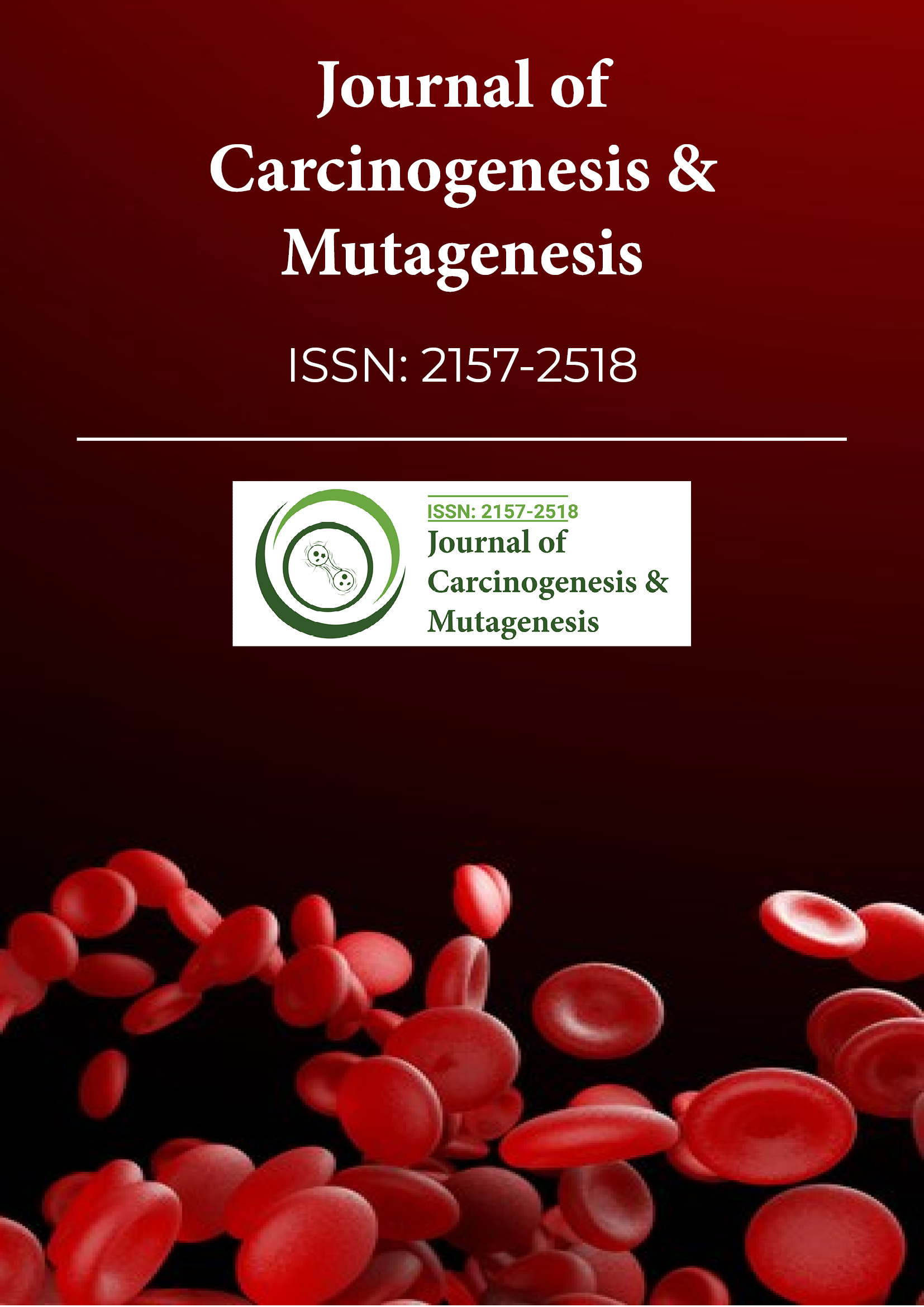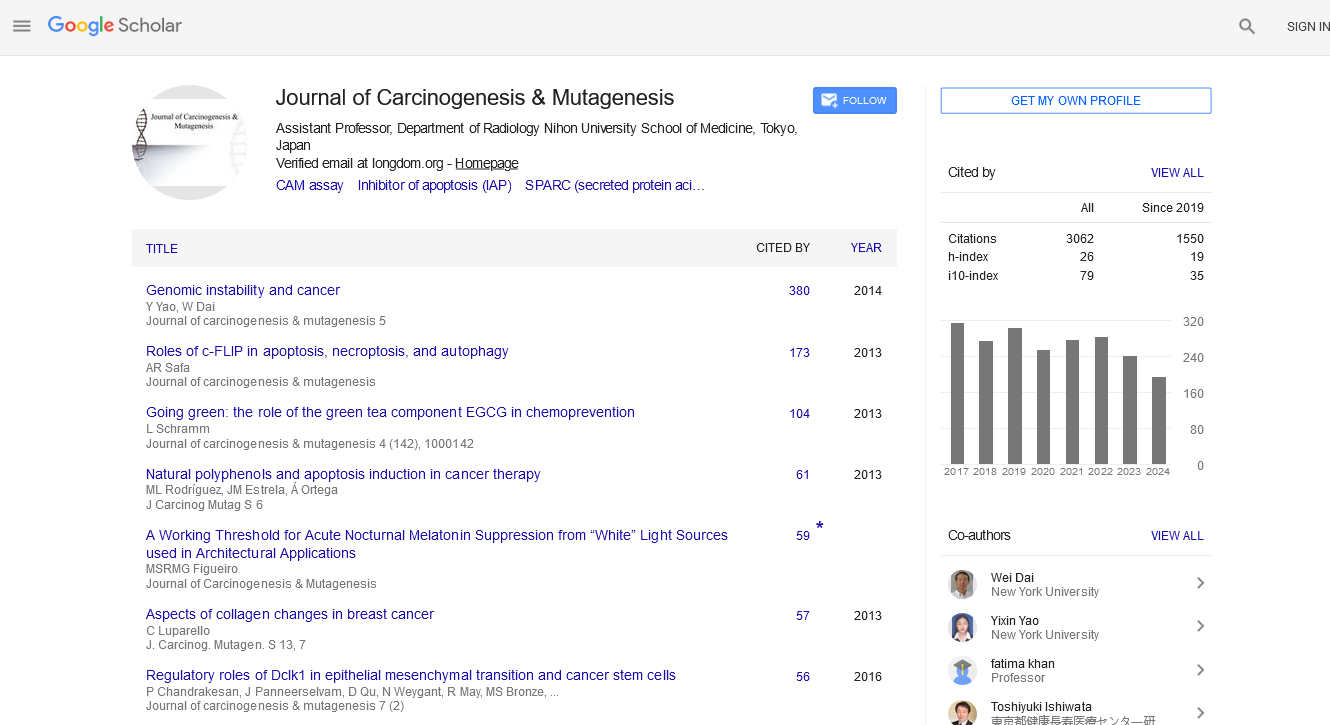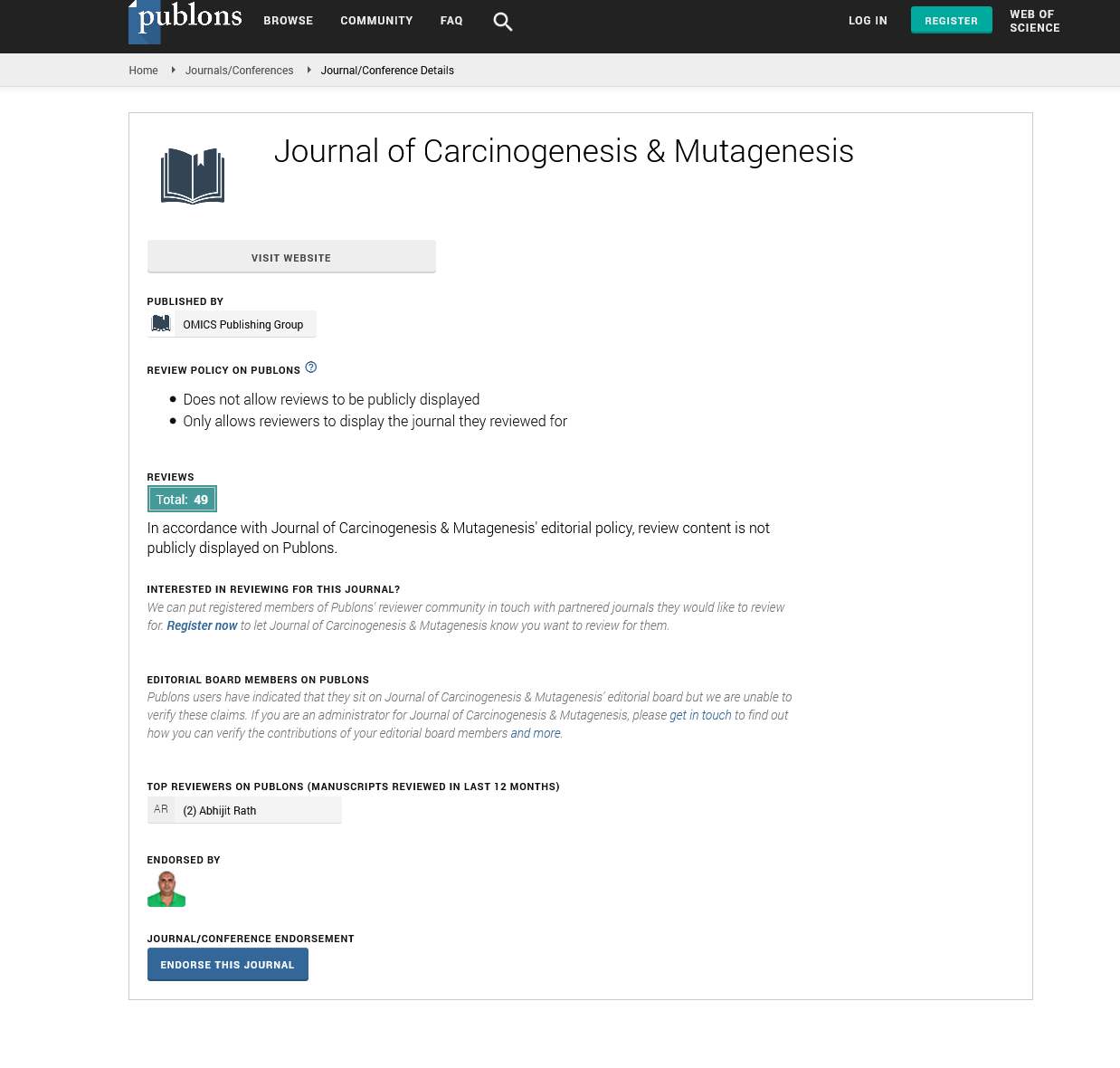Indexed In
- Open J Gate
- Genamics JournalSeek
- JournalTOCs
- Ulrich's Periodicals Directory
- RefSeek
- Hamdard University
- EBSCO A-Z
- OCLC- WorldCat
- Publons
- Geneva Foundation for Medical Education and Research
- Euro Pub
- Google Scholar
Useful Links
Share This Page
Journal Flyer

Open Access Journals
- Agri and Aquaculture
- Biochemistry
- Bioinformatics & Systems Biology
- Business & Management
- Chemistry
- Clinical Sciences
- Engineering
- Food & Nutrition
- General Science
- Genetics & Molecular Biology
- Immunology & Microbiology
- Medical Sciences
- Neuroscience & Psychology
- Nursing & Health Care
- Pharmaceutical Sciences
Commentary - (2022) Volume 0, Issue 0
Molecular Diagnosis of Leukemia
Pier Mario Biava*Received: 02-Feb-2022, Manuscript No. JCM-22-15757; Editor assigned: 04-Feb-2022, Pre QC No. JCM-22-15757 (PQ); Reviewed: 18-Feb-2022, QC No. JCM-22-15757; Revised: 22-Feb-2022, Manuscript No. JCM-22-15757 (R); Published: 28-Feb-2022, DOI: 10.35248 /2157-2518.22.S30.003
Description
CGH compares the genetic material from a test individual, such as a leukaemia patient, to that of a reference 'normal' human (typically DNA pooled from multiple people), in order to detect the presence of copy-number alterations in the test sample. Small pieces of test and reference DNA are digested and tagged with different fluorophores. Previously, DNA was allowed to hybridise to normal metaphase spreads to detect copy-number alterations with a resolution of 2–3 Mb via differential fluorophore binding, but microarrays have since replaced metaphase spreads to increase resolution. Bacterial artificial chromosomes (BACs) or, more typically, oligonucleotides can be used as DNA probes on the array. The length of the probes, the number of probes on the array (probe density), probe dispersion, the size of the clonal population, DNA quality, and software analysis methods all influence resolution and sensitivity. Array CGH (aCGH) can detect deletions or insertions as tiny as 50 kb, which is a significant improvement over karyotyping. Wholegenome scanning arrays have enabled for the detection of chromosomal aberrations in a significantly higher proportion of leukaemia patients, and it is hoped that the discovery of new aberrations will lead to more precise prognostic schemes. However, aCGH has the drawback of being unable to detect balanced rearrangements, which are rather common in leukaemia.
The application determines the array design, which is crucial. CGH arrays typically have a large number of probes distributed equally across the genome, with a higher density of probes in certain regions of interest. A 385K array, for example, has a median probe spacing of 6 kb, but breakpoints can be mapped in 5-kb intervals by targeting specific areas. Arrays can also be created to specifically target specific locations that have been linked to disease.
The results of these and other studies using array-based karyotyping to evaluate CLL have consistently revealed good concordance with FISH panel results, with nonconcordance explained by low tumour burden, the existence of tiny subclones, or the study's arrays' relatively poor resolution. As a result, aCGH profiling could be used as a standard clinical diagnostic for CLL. Furthermore, Gunn et al. employed aCGH to detect clinically significant atypical 11q deletions (atypical because they did not involve loss of the ATM gene) in CLL that may have been missed by FISH panels used for disease prognostication.
Although chromosomal abnormalities occur often in CLL, relatively few impacted tumour suppressors and oncogenes have been implicated in the disease using aCGH. Gunn et al. discovered a high frequency of submicroscopic deletions on chromosome 22q11, both monoallelic and biallelic, using a BAC array. They then used a higher-resolution oligonucleotide-based array to show that the 22q11 deletions ranged in size from 0.34 Mb to approximately 1 Mb, and used reverse-transcription quantitative real-time PCR to show that genes in the minimally deleted region (including PRAME) had significantly reduced mRNA expression (RT-qPCR).
However, unlike CGH arrays, which typically have probes evenly spread across the genome, SNP arrays' probe distribution is determined by the position of SNPs, hence resolution within 'SNP deserts' can be poor. Arrays incorporating both SNPs and genomic probes have been designed to improve resolution. The ability to detect CN-LOH is a unique feature of SNP arrays, as this phenomenon is undetectable by conventional cytogenetic analysis, FISH, and most CGH arrays (although SNPs have recently been introduced into some CGH arrays to allow CNLOH detection [BlueGnome's CytochipTM Cancer; Oxford Gene Technology's CytosureTM ISCA UPD array]). SNP arrays can identify CN-LOH because they provide genotyping information in addition to copy number, allowing them to discover diploid regions of homozygozity within the genome. Acquired CN-LOH can also be detected using PCR-based molecular techniques; one of the first reports of CN-LOH in AML, of the long arm of chromosome 13 encompassing the FLT3 locus, was discovered by accident while studying chimerism status after stem cell transplantation using polymorphic microsatellite markers.
Copy-number LOH in a neutral state Numerous investigations have revealed that CN-LOH is a common occurrence in leukaemia, particularly myeloid malignancy, but one that went mostly unnoticed until SNP arrays became widely available. In a study of 60 AML patients utilising 10K arrays, the efficacy of SNP arrays for detecting CN-LOH was first revealed. CN-LOH is frequently found in patients with a normal karyotype and no other clonal markers, and is especially common in mixed myelodysplastic syndrome (MDS)/myeloproliferative neoplasm (MPN), with abnormality rates of 48 percent in chronic myelomonocytic leukaemia and 38 percent in MDS/MPNunclassifiable cases, though it should be noted that this study did not use paired. In leukaemia, CN-LOH regions frequently comprise oncogenes or tumour suppressor genes, allowing for duplication of a mutation with loss of the wild-type allele but no genomic imbalance. Furthermore, SNP array analyses of potential genes inside regions of recurrent CN-LOH have led to the discovery of novel altered genes such as CBL (related to CNLOH 11q in myeloid malignancy) and TET2 (connected to CNLOH 4q in MDS and mixed MDS/MPN). In juvenile ALL, SNP arrays have also discovered repeated submicroscopic deletions, allowing the discovery of additional cancer-related genes in the minimally deleted region, such as PAX5, IKZF1, and CDKN2A.
When paired with standard metaphase cytogenetics, array-based karyotyping improves diagnostic yield. However, because detection of unbalanced cytogenetic defects requires a sufficient number of cells sharing a clonal abnormality with both aCGH and SNP arrays, standard metaphase cytogenetics may still be the most appropriate technique to use in the investigation of leukaemia in cases with a small clonal population or multiple sub clones, despite its limited resolution and reliance on dividing cells, in cases with a small clonal population or multiple subclones. Another difficulty with array analysis is appropriately differentiating somatically acquired, cancer-specific lesions from patient-specific hereditary copy-number variations or homozygozygosity segments. Because copy-number variations are uncommon and seldom recur, paired investigations with matched tumour and germ line DNA samples are essential for appropriately identifying somatically acquired mutations.
Citation: Biava PM (2022) Molecular Diagnosis of Leukemia. J Carcinog Mutagen. S30:003.
Copyright: © 2022 Biava PM. This is an open-access article distributed under the terms of the Creative Commons Attribution License, which permits unrestricted use, distribution, and reproduction in any medium, provided the original author and source are credited.


